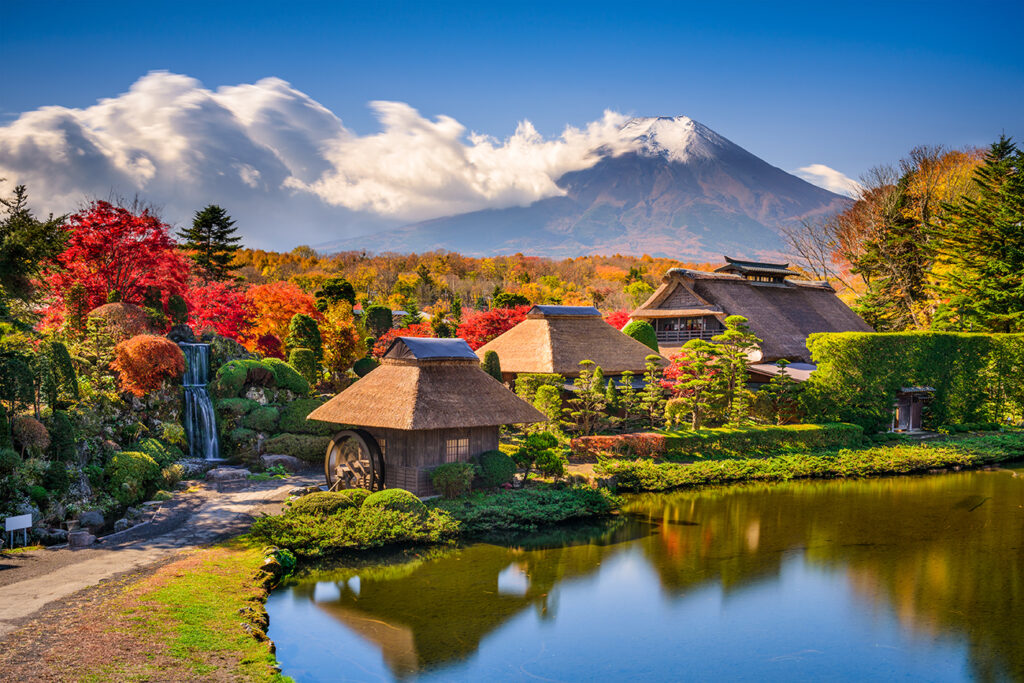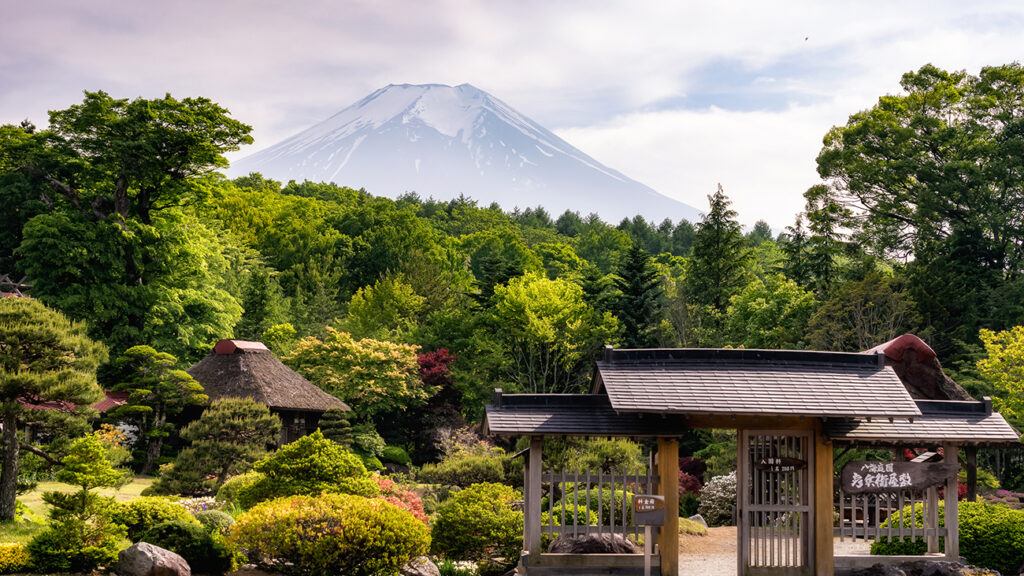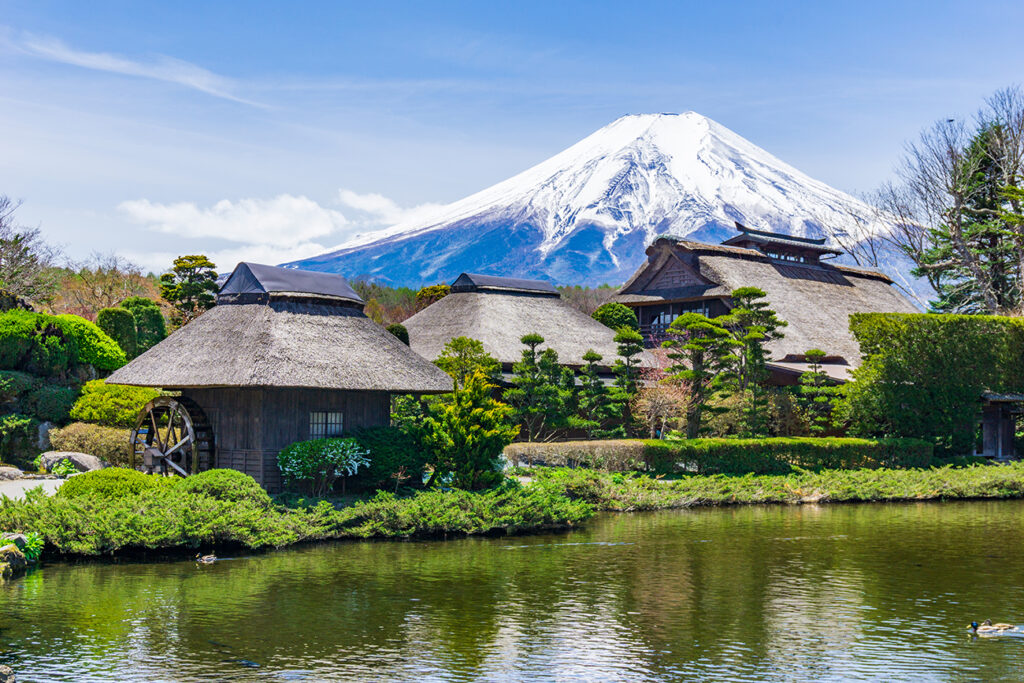
Discovering Oshino Hakkai
Nestled within the scenic Fuji Five Lakes region, Oshino Hakkai, known as the Eight Seas of Oshino, boasts a collection of eight exquisite ponds that hold fascinating historical significance. These enchanting ponds rest on the grounds where a sixth lake once thrived but dried-up centuries ago. Fed by pure snowmelt from the slopes of Mount Fuji, these eight ponds undergo a natural decades long filtration process that creates mineral-rich waters as they pass through porous layers of volcanic rock. The crystal-clear pond waters with its pristine beauty led to Oshino Hakkai’s inclusion in the prestigious Mt. Fuji UNESCO World Cultural Heritage site in 2013.
 Each of these ponds possesses its own distinct characteristics, evident from their names alone. For instance, there is the “Deguchi Ike,” meaning exit pond, situated at the village’s far end. Another fascinating example is the “Kagami Ike,” aptly named the mirror pond, which captivates visitors by reflecting an upside-down image of Mount Fuji. Such unique attributes add to the allure and charm of Oshino Hakkai’s natural wonders.
Each of these ponds possesses its own distinct characteristics, evident from their names alone. For instance, there is the “Deguchi Ike,” meaning exit pond, situated at the village’s far end. Another fascinating example is the “Kagami Ike,” aptly named the mirror pond, which captivates visitors by reflecting an upside-down image of Mount Fuji. Such unique attributes add to the allure and charm of Oshino Hakkai’s natural wonders.
 A historical place for religious worship
A historical place for religious worship
Once known as “Fujisan Nemoto Hakko Sacred Grounds” or the Moto-Hakko , indicating their spiritual importance. The number eight held great significance in Buddhism, and undertaking a pilgrimage to travel around the eight ponds formed a crucial aspect of Mt. Fuji worship. Religious devotees would cleanse and purify themselves in these sacred waters before embarking on the climb to Mount Fuji. When the new government headed by Emperor Meiji implemented measures aimed at curbing the vast influence and wealth of Buddhist sects, Fuji worship waned marking a definitive change in the spiritual history of Oshino Hakkai.
 Explore Hannoki Bayashi Shiryokan
Explore Hannoki Bayashi Shiryokan
Today, Oshino Hakkai attracts numerous visitors who come in search of Mount Fuji’s captivating views all throughout the year. But it is during winter is when Mount Fuji showcases its most glorious beauty. This extraordinary phenomenon, known as “Diamond Fuji,” graces only specific vantage points based on the Earth’s position. Diamond Fuji is an enchanting spectacle where the rising or setting sun aligns perfectly with the peak of Mount Fuji, giving the impression that the caldera is tenderly cradling the sun.
At the center of the village, lies the charming Hannoki Bayashi Shiryokan, a quaint open-air museum encircling the largest pond. Inside, visitors are treated to a treasure trove of exhibits, showcasing ancient farming tools and a captivating array of historical samurai weaponry. Echoing the museum’s charm, the village’s houses proudly display traditional thatched roofs, immersing visitors in a timeless and nostalgic rustic atmosphere reminiscent of bygone eras.
